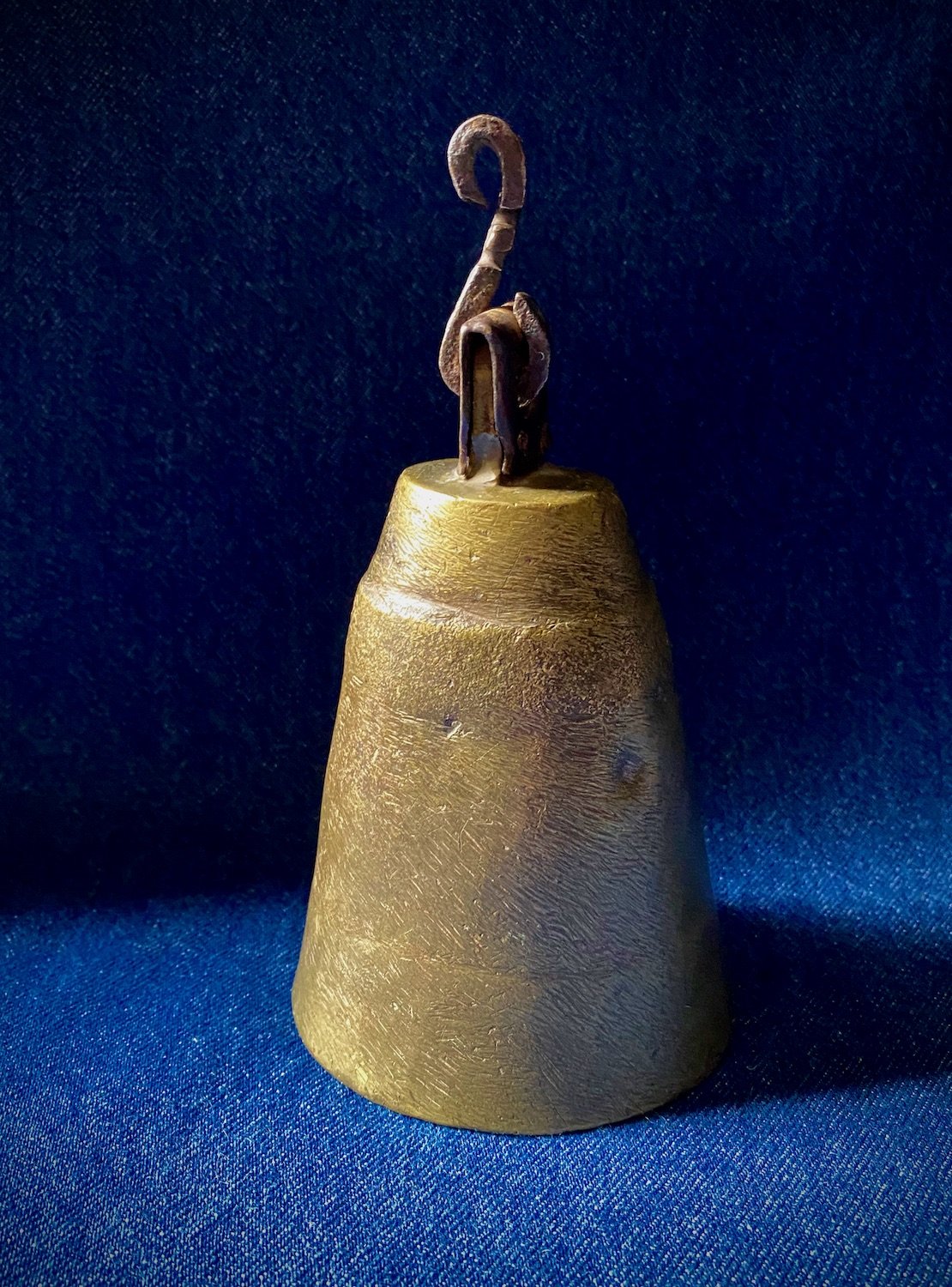Camel-Herders Bell
Brass camel bell, probably from the Kochi (Kuchi) people of Afghanistan (similar bells are used my other peoples in the region, however). 20th century. Thick cast brass with a lovely tone, made even more musical by the nested clapper-bells, which are secured by random loops of wire. Although nomadic pastoralism is in decline worldwide, camels continue to provide transportation for goods and people (as well as milk) to nomadic peoples in Central Asia, Asia Minor, and North Africa. Such bells are attached to the camels to help locate them when they are out foraging in the bush.
Brass camel bell, probably from the Kochi (Kuchi) people of Afghanistan (similar bells are used my other peoples in the region, however). 20th century. Thick cast brass with a lovely tone, made even more musical by the nested clapper-bells, which are secured by random loops of wire. Although nomadic pastoralism is in decline worldwide, camels continue to provide transportation for goods and people (as well as milk) to nomadic peoples in Central Asia, Asia Minor, and North Africa. Such bells are attached to the camels to help locate them when they are out foraging in the bush.
Brass camel bell, probably from the Kochi (Kuchi) people of Afghanistan (similar bells are used my other peoples in the region, however). 20th century. Thick cast brass with a lovely tone, made even more musical by the nested clapper-bells, which are secured by random loops of wire. Although nomadic pastoralism is in decline worldwide, camels continue to provide transportation for goods and people (as well as milk) to nomadic peoples in Central Asia, Asia Minor, and North Africa. Such bells are attached to the camels to help locate them when they are out foraging in the bush.



